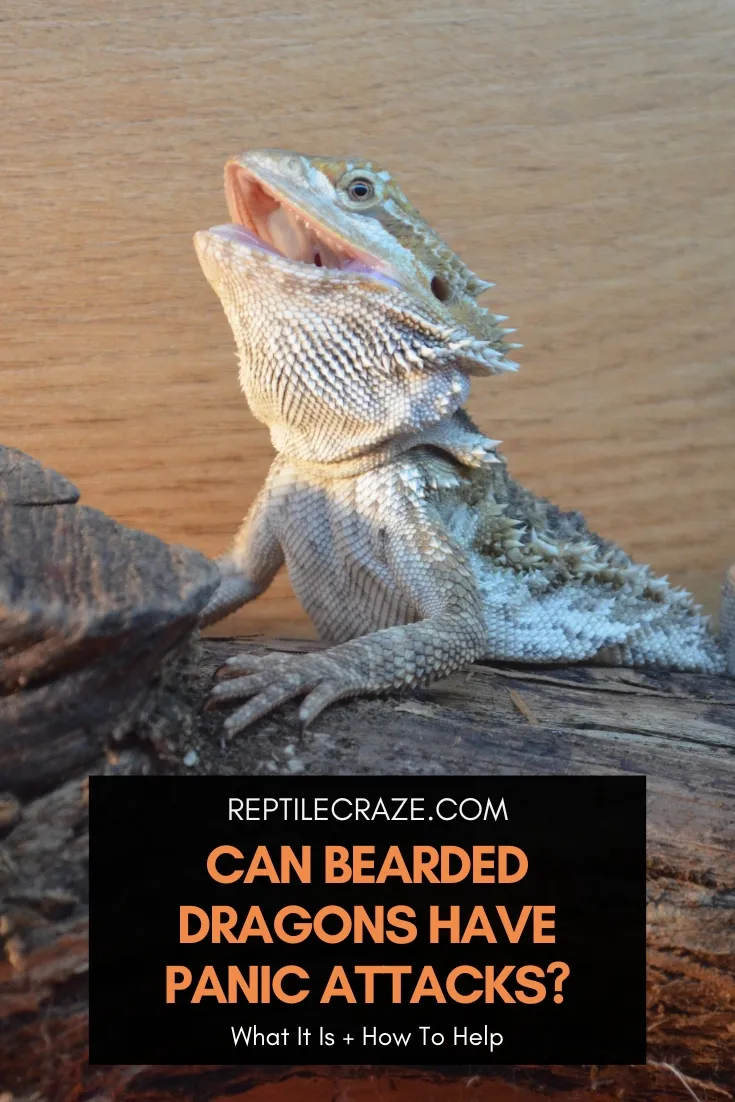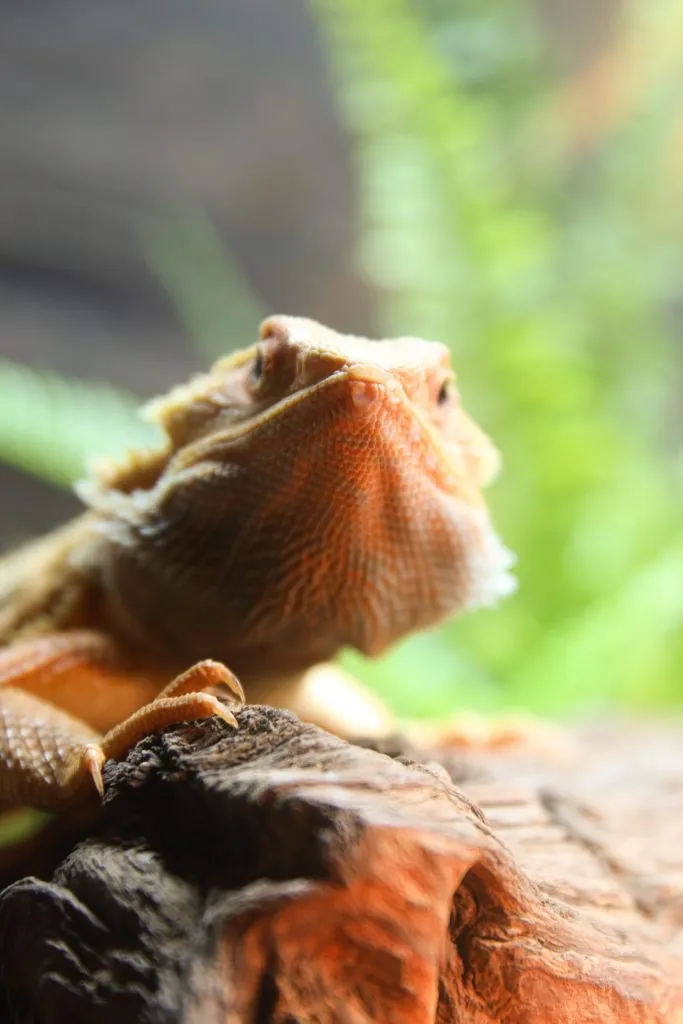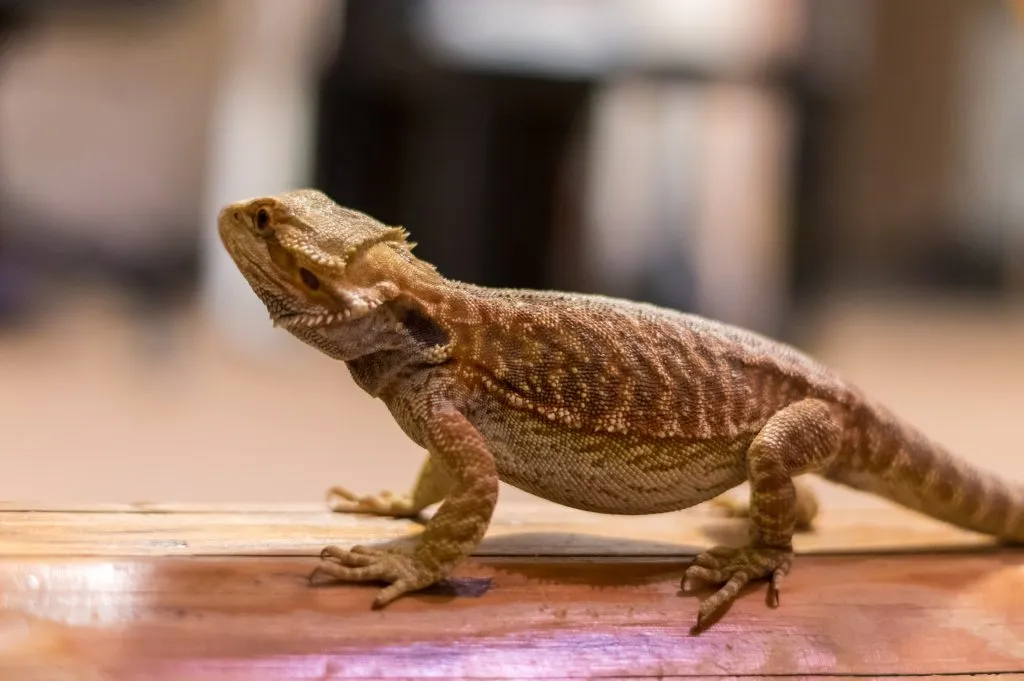
Is your bearded dragon freaking out in its
Bearded dragons may act like they’re having a panic attack, but their heightened anxiety is usually triggered by something tangible. Suddenly running around, trying to flee, and darkening in color are all signs of extreme stress. Many things that trigger stress in bearded dragons are environmental.
Understanding panic attack-like responses can help you create a safe and happy environment for your bearded dragon. In this article, we explore the triggers and symptoms of a bearded dragon panic attack, as well as tips for keeping your beardie’s stress levels to a minimum.
Table of Contents
What Triggers a Panic Attack Response In Bearded Dragons?
Bearded dragons exhibit panic attack-like behavior in response to fear or feeling threatened.
Although it can seem irrational to us — one minute they’re lounging on your arm, the next they’re in a frenzy — it makes a lot of sense when you consider their natural environment.
In the wild, bearded dragons live in close proximity to a host of predators so, they evolved to be sensitive to their environment.
When beardies sense danger, their body releases stress hormones that allow them access to energy reserves they need to escape.
Common triggers that can prompt a panic attack-like response include sudden movement, loud noises, and environmental changes.
Symptoms of Anxiety in Bearded Dragons

Bearded dragons possess the incredible ability to communicate by changing the color of their neck area and chest. An example of this is darkening their beard as a sign of aggression to scare off potential predators.
Stress Marks
When a bearded dragon is stressed, stress marks usually appear on its chest and belly. Stress marks are dark areas that range from spots to stripes, and are indicative of a heightened state of anxiety.
Other common symptoms of anxiety in bearded dragons include:
- Running around frantically
- Hiding behind objects or in crevices
- Glass surfing (More on glass surfing or escaping here)
- Mouth open and hissing
- Biting or stiffening when handled (More on beardie bites here)
Managing Anxiety in Bearded Dragons

If you notice your bearded dragon is showing signs of anxiety, the first thing to do is identify the cause. Taking the following ten steps can also help to keep your beardie as safe and stress-free as possible. Here’s what to do:
- Check the temperature and humidity during the day and night to ensure the enclosure isn’t too hot or cold.
- Use a background for the back and sides of the enclosure so your beardie won’t be stressed by its reflection in the glass. (These backgrounds are good)
- Remove any new decor that may be causing anxiety.
- Clear out any uneaten live
food . - Provide lots of hiding places within the enclosure. (Use this hide box)
- Move the
tank away from windows to limit outside noise and any visual stressors, such as cats or birds. - Ensure the enclosure is steady and isn’t affected by vibrations.
- Move or place a barrier between any neighboring pets.
- When picking up your beardie, approach from the side, not directly overhead.
- Take it out of the
tank regularly.
Tip: If your bearded dragon seems to be scared all the time, read our article on that here. We go into detail about what scares bearded dragons and how to find out what it is that scares your dragon.
What to do if You Beardie Has a Panic Attack
If your bearded dragon becomes panicked, return him to his enclosure and give him time to settle down.
Research shows that longer periods of handling can increase stress, so handling a panicked dragon will only increase its fear and stress.
If your beardie is having frequent panic attacks and you’ve ruled out the possible causes, it’s best to visit your vet to check for any underlying health problems.
- Eastern Rat Snake: Nature’s Pest Control and Fascinating Reptile - September 20, 2024
- Eastern Racer: The Fast and Agile Snake - September 19, 2024
- The Eastern Indigo Snake: The Majestic, Non-Venomous Hunter of the Southeast - September 18, 2024
